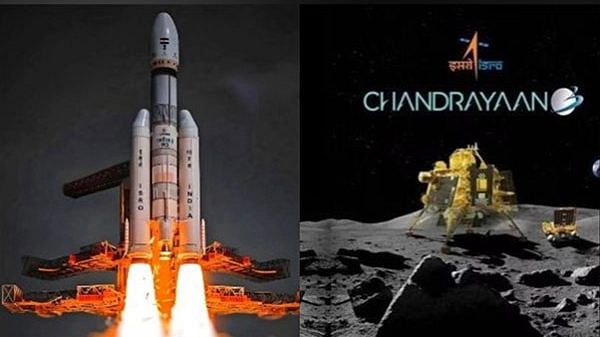The Indian Space Research Organisation has successfully landed a spacecraft on the lunar surface today, making India the first country to land on the Moon’s south pole. The Chandrayaan–3 spacecraft is the result of nearly four years of rigorous research and development, incorporating the lessons learned from the previous 2019 mission, which unfortunately did not achieve a controlled lunar landing. This time, the mission carried high hopes, as numerous improvements had been made, including enhancements to the sensor suite, algorithms, spacecraft actuators, and structural components.
As a mission, Chandrayaan–3 goes above and beyond the scientific and engineering achievements it is intended to accomplish for the nation. Multiple aspects, including geopolitics, soft power diplomacy, rekindled public interest in science and technology, and the potential for driving investment in the space sector, will see a positive impact in the coming years.
The geopolitical dimension and the utilisation of soft power cannot be ignored in this lunar landing endeavour. It will determine how India is perceived in the global community in the coming years, serving as a symbol of India’s growing presence and capabilities.
Interestingly, the Chandrayaan–3 landing coincides with the recent failure of a Russian attempt to land on the Moon. The Luna-25 spacecraft, Russia’s first mission in 47 years, crashed into the Moon after the Russian space agency Roscosmos lost contact and the craft spun uncontrollably, eventually crashing onto the lunar surface. Russia, once a powerhouse of space missions and home to many firsts in space–related exploration activity, is now a seemingly frailing power. In contrast, China, India’s neighbourhood rival, has already mentioned that it plans to have human presence on the Moon by 2030 by sending two rockets, one carrying the spacecraft that will land on the surface and another transporting the astronauts. India recently signed the US-led Artemis Accords, which contains a set of principles and guidelines for the civil exploration and use of the Moon. India is not a part of the Artemis programme yet. However, the success of Chandrayaan-3 might open doors towards India contributing to future exploration missions within the framework of the Artemis.
Also read: Fermi to Bhabha — scientists who shaped the atomic era, both in and out of ‘Oppenheimer’ frame
Time now to reap the gains
This successful landing of Chandrayaan-3 is clearly going to bring substantial geopolitical and soft power benefits for India, much like the gains and attention garnered by previous missions such as Chandrayaan 1 and Mangalyaan. This achievement will create several ripple effects, which will continue to accentuate India’s growing influence and reputation as a technological powerhouse on the global stage.
The launch of Chandrayaan–3 and now its successful landing on the Moon are events that are filling the hole of inspiring India’s younger generation and getting them excited about science and technology. It is a mini-Apollo moment that India is experiencing right now. The Chandrayaan–3 mission’s launch video has already amassed over 25 million views just on ISRO’s official YouTube page. One cannot recall any other science and engineering–related effort that drew such interest, capturing public fascination generally reserved for top-rated movie stars. It seems that this mission is speaking to a society that lacks publicly revered scientists who also happen to be good at outreach such as Carl Sagan. This public engagement, especially the interest shown by the young people, is particularly valuable in a country where dedicated investment in science communication is limited.
The Chandrayaan–3 mission has really turned into a tool to increase engagement with STEM (science, technology, engineering, and mathematics). Just the fact of having millions of young people enthusiastically engaging with science and technology is a huge return on investment on a mission such as Chandrayaan–3 beyond the technological and scientific feats it will go on to achieve. The mission will cultivate a new generation of scientists, engineers, mathematicians, artists, and other professionals in the coming years.
The way forward for ISRO and India should be to continue making such investments in space science and exploration to develop the human capital and the necessary infrastructure for modernising the country’s economy. ISRO has an exciting lineup of future missions, including the Aditya L1 (coronagraphy spacecraft to study solar atmosphere), Gangayaan tests (human spaceflight mission), Shukrayaan (exploration of Venus), and more. Moreover, private companies such as Agnikul Cosmos and Skyroot Aerospace have also planned orbital and suborbital tests, which will surely widen the attention that space as a sector would gain in the upcoming months and years. We hope to see a sustained roadmap for more such missions that will take India within and beyond the solar system.
Chandrayaan–3 represents not only scientific and engineering excellence but also signifies a pivotal moment in India’s journey toward realising its full potential.
The author is the co-founder of satsearch, a global marketplace for the space industry, and co-founder of think tank Spaceport SARABHAI. He tweets @cosmosguru. Views are personal.
(Edited by Prashant)



